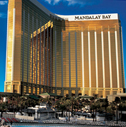Spray polyurethane foam (SPF) roof systems are unique in composition and present roofing contractors with distinct worker health and safety challenges. Hazards from falls, fire, electricity and exposure to hazardous substances are found on nearly all roofing job sites, and SPF roof system installations are no exception.
However, SPF roof system hazards often are insidious, and necessary controls to prevent worker injury may not be readily apparent or may require solutions uniquely suited to SPF roof system installation procedures, materials and equipment.
Background
An SPF roof system installation involves high-pressure spraying of a two-component mixture of chemicals applied by a worker (applicator) who typically moves backward along a roof surface. The mixture is applied in layers, or lifts. The spray rig that heats and delivers the chemicals is connected by hoses tended by another worker (helper) to a spray gun operated by the SPF applicator. As the mixture strikes the work surface, it expands and eventually hardens to its finished consistency after which a protective coating is applied by spray or roller.
According to the Environmental Protection Agency (EPA), two components mix together to make SPF: Component A, the isocyanate portion, usually a polymeric methylene diphenyl diisocyanate and other similar isocyanates, and Component B, a proprietary mix of polyol resin, flame retardants, blowing agents, catalysts and surfactants. The American Chemistry Council's Center for the Polyurethanes Industry (CPI) notes SPF may be either closed-cell or open-cell. Closed-cell SPF has a higher R-value, water resistance, strength and rigidity than open-cell SPF. Closed-cell SPF is predominantly used in roofing applications though low-rise foam adhesive containing isocyanates is quite common and can pose hazards similar to those related to the use of SPF materials.
Chemical exposures
SPF application under pressure results in a respirable mist or vapor of elements in the combined mixture. SPF material that contacts the eyes or skin may cause irritation; this may occur whether the components are in liquid form before mixing or as a sprayed product. Overexposure to SPF's isocyanate side may cause respiratory sensitization, chest discomfort, shortness of breath and reduced lung function. The EPA describes sensitization as the development of an unusual sensitivity to a substance that may result in an allergic reaction to future exposures even at low concentrations.
In addition to skin irritation caused by dermal exposure, as noted by the Occupational Safety and Health Administration (OSHA) in June 2013 when it announced its National Emphasis Program for occupational exposure to isocyanates, respiratory sensitization may result from skin exposure to isocyanates. According to CPI, once sensitized, subsequent worker exposure to isocyanates may cause coughing, shortness of breath, wheezing, chest tightness and an asthma attack, which may be life-threatening. A "safe level" of isocyanate exposure is not recognized for workers who become sensitized.
Exposure to SPF's Component B may cause respiratory, skin and eye irritation and temporary, minor blurry vision; however, none of these conditions appear to produce long-term detrimental effects.
Solvents, primers and coatings also may present hazards to workers installing an SPF roof system. Mineral spirits, toluene, xylene, methyl ethyl ketone all are common solvents used as cleaning or thinning agents for equipment or coatings. The particular hazards associated with each are found in the product's material safety data sheet (MSDS) or safety data sheet (SDS) but flammability is the primary hazard posed by solvents. Precautions must be taken to avoid sparks and flames around solvents, and a fire extinguisher must be accessible as required by OSHA's Safety and Health Regulations for Construction Standard Subpart F (29 CFR 1926.150).
There are several coating varieties for SPF roof systems, and some are solvent-based. Hazards associated with solvent-based products naturally track with the solvent ingredient, and all coatings may pose respiratory hazards when spray-applied. Again, the MSDS or SDS is a critical piece of information to have available to recognize and control hazards specific to the coating. OSHA requires MSDS or SDS information to be "readily accessible" in the workplace so there is no delay when getting critical information to a worker who needs it.
It is important to note exposure to isocyanates and other chemicals in SPF roof system installations affects the spray applicator as well as the helper who may be somewhat removed from the direct application point. Because mists and vapors may linger in the air or be moved by wind currents, it is impossible to consistently determine where the highest chemical concentrations may be. Therefore, all workers in the vicinity of SPF operations likely will need complete personal protective equipment (PPE).
Chemical hazard controls
A manufacturer's MSDS or SDS will describe controls in greater detail, but SPF exposure controls generally demand three key protection areas: skin, eyes and respiratory.
Skin protection can be accomplished by wearing a full-body coverall with a hood or spray sock for head protection, chemical-resistant gloves worn over the coverall or taped at the wrist to prevent spray penetration, and work boots with the coverall's ankle portion taped or secured to the top of the boot.
Eye and respiratory protection is best accomplished by wearing a full face-piece respirator with replaceable protective lens films so the lens can be kept clear of overspray by simply removing and replacing the clear, protective film when dirty. A respirator may be air-purifying or a supplied-air type depending on the product manufacturer's recommendation and the roofing contractor's hazard analysis.
An air-purifying full face-piece respirator equipped with an organic-vapor cartridge removes dangerous contaminants from the air using a pre-filter to remove larger particles of spray mist; the media in the cartridge absorbs contaminants so the wearer does not breathe them in. The cartridge media can only absorb a certain amount of contaminants, so its lifetime is limited; a mandatory, specific change-out schedule must be adhered to for replacing cartridges so the respirator remains effective. This is important for isocyanate exposure because it is an odorless chemical and the user will not smell or taste contamination in the air to indicate a change-out is required when the media is spent.
Supplied-air respirators use clean air from an intake away from the contaminated work area to ensure the wearer is breathing fresh air. For either type of respirator to be effective, proper fit testing, selection, use and equipment maintenance must be performed under the provisions of a company's written respiratory protection plan as demanded by OSHA rules (29 CFR 1910.134).
Airless spray hazards
SPF is applied with airless spray rigs capable of producing pressures in excess of 3,000 pounds per square inch. Because of such high pressures, if any body part contacts the spray gun's nozzle during a spray application or if connectors or hoses fail and a worker is too close to the failed piece of equipment, it is possible to inject material under the skin. This can be especially hazardous if hoses are draped over the back by an applicator or helper as the application process proceeds.
Workers always should be familiar with the operating instructions for the specific piece of SPF equipment used on the roofing job. Following are some basic precautions:
- Never place hands or fingers over the spray tip.
- Never point the spray gun at another person or hold it close to someone when pressurized.
- Keep the spray tip guard and trigger guard in place on the spray gun when spraying and ensure the trigger lock or safety is operable.
- Do not place your hand or fingers over a leak to attempt to stop it—gloves and rags are not sufficient protection against injection.
- Seek immediate medical attention if you suspect an injection injury while spraying—these injuries may appear as cuts but damage may be more severe and if left untreated can cause serious health problems.
Fall protection
When workers are exposed to falls of 6 feet or greater on low-slope roofs, OSHA's fall-protection requirements demand the use of guardrails, safety nets or personal fall-arrest (PFA) systems. In addition, roofing workers may be protected by a warning-line system. When performing work outside the warning-line system, one of the previously mentioned systems or a safety monitor may be used.
Implementing these fall-protection system options pose problems during SPF roof system installation. Guard-rail systems with weighted plates to secure siderails must be moved before an applicator can spray the underlying roof surface. Recent innovations in guardrail design may be more effective provided the roof has a parapet wall with a sufficient height to allow installation of a clamping bracket to secure siderails instead of the weighted plate. Other perimeter guardrail systems that use cables as top rails and midrails with minimal intrusion onto the roof surface also may be more effective for providing fall protection during SPF roof system installations.
The warning-line system poses similar problems to the guardrail system—stanchions often must be relocated to allow spraying. Another issue relates to using a safety monitor when spray work takes place outside the warning line. OSHA rules state mechanical equipment may not be used in areas where a safety worker is watching workers. OSHA has not published a specific instruction as to whether a spray gun qualifies as mechanical equipment, which would preclude using a safety monitor, but the agency has said a power washer's hose and sprayer may be used outside warning lines, so it would seem logical hoses and guns for SPF installations also would be allowed.
As with other roof system installations, protection from falls through skylights also must be considered during SPF roof system installations whenever perimeter guardrails or warning-line systems are used. Covers may be effective in this regard but also often need to be removed for work to be completed. PFAs may be the most efficient solution for such fall hazards.
Difficulties with PFA systems used during SPF roof system installations result when lifelines are soiled by uncured foam, preventing proper movement of a rope grab to adjust for the worker's position. Self-retracting lifelines may be a better alternative if they can be kept off the roof surface so contamination does not impair the retracting mechanism.
Stay safe
Worker exposure to SPF during exterior applications generally is less significant than interior exposures, such as the installation of insulating SPF in walls, ceilings and floors. Nevertheless, during roof system installations, workers must be aware of the health hazards posed by SPF and the means of controlling those exposures. Use and maintenance of respirators and other PPE is critical to ensure worker safety and health.
Harry Dietz is NRCA's director of risk management.
A number of resources are available regarding SPF safety:
The American Chemistry Council's Center for the Polyurethanes Industry offers free online spray polyurethane foam chemical safety training at www.spraypolyurethane.org/SPF-Chemical-Health-and-Safety-Training.
The National Institute for Occupational Safety and Health's Respirator Selection Logic for determining appropriate respirators for chemical exposures is available at www.cdc.gov/niosh/docs/2005-100/pdfs/2005-100.pdf.
The Occupational Safety and Health Administration's Directive CPL 03-00-017, June 20, 2013, describing its National Emphasis Program for Occupational Exposure to Isocyanates is available at www.osha.gov/OshDoc/Directive_pdf/CPL_03-00-017.pdf.



